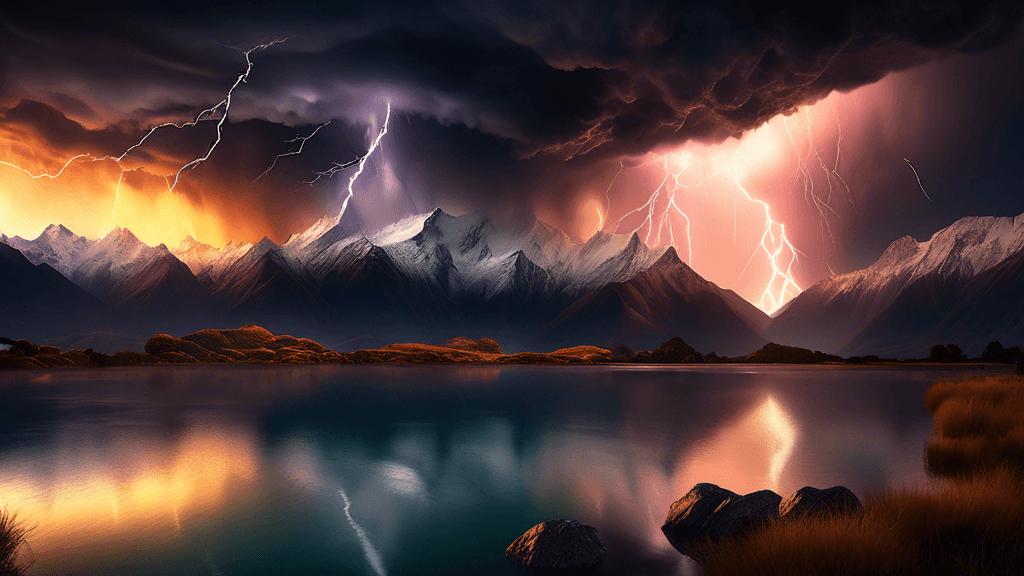
Dynamic Weather Photography in New Zealand: Capturing the Climax
Share
Introduction to Dynamic Weather Photography in New Zealand
New Zealand, renowned for its striking landscapes and diverse climates, presents an unparalleled opportunity for photographers. The unique combination of its geographical isolation, situated in the roaring forties' latitudinal belt, brings about some of the most dynamic weather patterns. These patterns create perfect scenes for weather photography—an art form that captures the raw, often transient beauty of weather in its most dramatic forms.
Understanding Weather Patterns in New Zealand
New Zealand's weather is highly variable. Situated across two main islands, stretching from the subtropical north to the temperate south, the country experiences a wide range of weather phenomena. Key factors influencing these weather patterns include:
- The Southern Alps acting as a barrier, causing significant rainfall variations between the Western and Eastern regions.
- Maritime influences that often lead to rapid weather changes.
- Frequent interactions between warm subtropical and cold Antarctic air masses.
This creates astounding opportunities to capture dramatic weather events, from powerful thunderstorms and serene snowfalls to spectacular cloud formations and intense rainbows.
Tools of the Trade
For those looking to dive into dynamic weather photography, certain tools and equipment are essential:
- Camera: A DSLR or mirrorless camera with manual controls for exposure settings is ideal.
- Lenses: A variety of lenses, including wide-angle for expansive landscapes and a telephoto lens for capturing distant storms or cloud formations.
- Tripod: Essential for stabilizing your camera in windy conditions and for long-exposure shots.
- Weather-sealed protection: Camera covers and weather-sealed gear are crucial to protect against moisture and dust.
Techniques for Capturing the Climax
To truly capture the drama of New Zealand's weather, photographers must master certain techniques:
- Understanding Light: The way light interacts with clouds and landscapes can dramatically affect your images. Capturing the golden hours at dawn or dusk can add a stunning dimension to weather photographs.
- Composition: Using elements like storm-laden horizons or jagged mountains can add depth and interest to your shots.
- Exposure: Adjusting shutter speed, aperture, and ISO settings to suit the varying brightness of weather scenes is essential for capturing the mood and drama of the weather.
- Timing: Often, the most dramatic weather moments are fleeting. Patience and readiness to capture these quick changes are crucial.
Challenges and Safety
Weather photography, particularly in dynamic settings such as New Zealand, does come with its challenges and risks. Safety should always be the photographer’s priority. Keeping abreast of weather forecasts, understanding the terrain, and preparing for sudden weather changes are essential safety practices. Moreover, photographers should always maintain a safe distance from any dangerous weather phenomena such as storms or lightning.
Why Pursue Weather Photography in New Zealand?
The allure of capturing New Zealand's weather goes beyond mere documentation. It's an engaging, exhilarating pursuit that combines art with adventure. Renowned New Zealand photographer, Jeff Mitchell, once noted, Capturing the essence of the environment's mood during a weather event adds an unrivaled depth to landscape photography. It challenges the photographer's skill and responsiveness to the forces of nature.
The emotional and visual power of such images can also play a crucial role in environmental conservation efforts. By showcasing the beauty and extremity of natural phenomena, photographers can highlight the importance of preserving such landscapes against the threats of climate change and environmental degradation.
Conclusion and Call to Action
Dynamic weather photography in NewfooZealand is not just about capturing beautiful images, but also about embracing the elements in their most dramatic form. This pursuit requires patience, resilience, and a deep appreciation of nature’s dynamics.
If you are inspired to start your journey in capturing the climactic phenomena of New Zealand, start by understanding the local weather patterns, equip yourself with the right gear, and always prioritize safety. Remember, the best images not only depict the beauty of the landscape but also tell the story of nature’s enduring power and fraguility.
Why not step outside, camera in hand, and let the skies tell their story through your lens?





